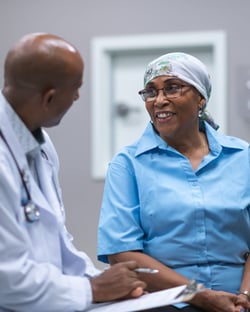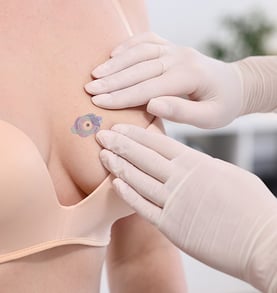 While most women are advised to begin annual mammograms at age 40, not everyone falls into the “average risk” category. Personal and family history, genetics, ethnicity, and even lifestyle can significantly shift when and how you should begin screening. We spoke with Dr. Tchaiko Parris, MD, PhD, Medical Director of Mammography & Breast Cancer Prevention Diagnostic at ImageONE, to explore how individualized risk assessment shapes breast cancer screening strategies.
While most women are advised to begin annual mammograms at age 40, not everyone falls into the “average risk” category. Personal and family history, genetics, ethnicity, and even lifestyle can significantly shift when and how you should begin screening. We spoke with Dr. Tchaiko Parris, MD, PhD, Medical Director of Mammography & Breast Cancer Prevention Diagnostic at ImageONE, to explore how individualized risk assessment shapes breast cancer screening strategies.
The Standard Starting Point: Age 40
Across the board, leading medical organizations, including the ACR, ACS, ACOG, USPSTF, and NCCN, recommend that women of average risk begin annual mammograms at age 40.
Dr. Parris emphasizes that this starting point has been shown to reduce mortality from breast cancer by up to 40%. “It’s not just about finding cancer earlier,” she notes. “It’s about offering better treatment options and improving survival.”
But What If You’re Not at Average Risk?
 Not all women face the same level of risk for developing breast cancer. Factors that may place someone in a high-risk category include:
Not all women face the same level of risk for developing breast cancer. Factors that may place someone in a high-risk category include:
- A personal or family history of breast cancer
- Known genetic mutations (e.g., BRCA1 or BRCA2)
- A history of chest radiation
- Certain ethnic backgrounds (e.g., non-Hispanic Black women have higher mortality rates)
- Dense breast tissue
- Early menstruation or late menopause
- Lifestyle or reproductive history
“That’s why we recommend all women obtain a breast cancer risk assessment by age 30,” Dr. Parris explains. “This is especially important for minority women, who are at an increased risk, with higher morbidity rates and poorer outcomes, and who are likely to benefit from tailored preventative strategies.”
How Risk Changes the Screening Plan
 For women identified as high risk, earlier and more frequent screening is typically advised; often beginning before age 40 and incorporating additional imaging beyond traditional mammography, such as Breast MRI, Ultrasound, and Contrast-enhanced mammography.
For women identified as high risk, earlier and more frequent screening is typically advised; often beginning before age 40 and incorporating additional imaging beyond traditional mammography, such as Breast MRI, Ultrasound, and Contrast-enhanced mammography.
These tools help fill in diagnostic gaps, particularly in women with dense breast tissue or those with a genetic predisposition.
“It’s not just about the starting age,” Dr. Parris adds. “It’s about customizing the imaging strategy to match the patient’s risk profile.”
Creating Equitable Screening Access
Disparities in breast cancer mortality, especially among non-Hispanic Black women, are due in part to barriers in screening access and quality. Dr. Parris advocates for inclusive care:
“We need to ensure every woman receives a risk assessment and screening plan that fits her—not just a one-size-fits-all approach.”
A Role for Clinicians: Advocate, Assess, and Personalize
One valuable tool that supports personalized care is the use of skin markers, such as Beekley Medical’s TomoSPOT® skin markers for digital breast tomosynthesis.
 TomoSPOT® skin markers help ensure clarity and consistency in breast imaging by identifying nipples, moles, scars, and both palpable and non-palpable areas of concern. For patients at high risk or undergoing earlier and more frequent screening, skin markers provide added confidence for both technologists and radiologists when reviewing and comparing images over time.
TomoSPOT® skin markers help ensure clarity and consistency in breast imaging by identifying nipples, moles, scars, and both palpable and non-palpable areas of concern. For patients at high risk or undergoing earlier and more frequent screening, skin markers provide added confidence for both technologists and radiologists when reviewing and comparing images over time.
More importantly, clearly marking areas of concern can ease patient anxiety by reassuring them that what they are feeling in their body (e.g., pain or lump) is being directly evaluated on their mammogram.
If you’re a clinician providing mammography services, consider this encouragement: take every opportunity to offer personalized care. Start the conversation about risk factors early, use tools that enhance imaging clarity and consistency, and guide high-risk patients toward the support and resources they need to stay ahead of potential concerns.
To learn more about TomoSPOT skin markers, contact your Medical Imaging Account Manager at 1.800.233.5539 or email info@beekley.com and ask about a complimentary trial evaluation at your facility.

Megan Sargalski
Marketing Communications Specialist
